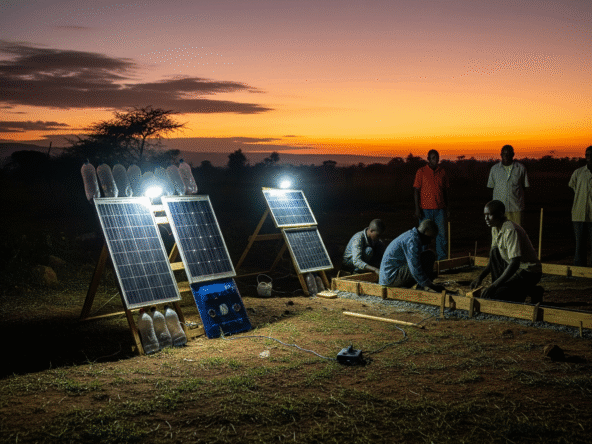From the fast-growing suburbs of Joska and Ruai to the dry outskirts of Isinya and Kisaju, efficient water use is becoming a necessity for homeowners and developers alike. For those building or upgrading budget-friendly homes, incorporating smart plumbing layouts and water-saving fixtures isn’t just environmentally responsible it’s financially wise.
This article shares affordable plumbing strategies, fixture recommendations, and site planning tips to help reduce water bills, improve comfort, and future-proof your home.
Why Water Efficiency Matters in Budget Housing
Water is one of the most recurring costs in any home. For landlords and homeowners, poor plumbing often leads to:
- Increased water bills
- Frequent tank refills (especially when using boreholes or deliveries)
- Costly leakage repairs
- Pressure on shared drainage systems
In areas with irregular supply or low water tables, these issues become even more pressing. That’s why water efficiency complements broader infrastructure plans like Soak Pit Design for Residential Plots, especially in semi-arid regions.
Start with a Smart Plumbing Plan
When building from scratch or adding extensions:
- Keep kitchens and bathrooms close together to minimize pipe runs
- Include a greywater line (for laundry and sinks) for easy reuse
- Install accessible inspection chambers to deal with clogs easily
Proper planning reduces both material costs and long-term repairs. It also ties into broader water management systems discussed in Construction Site Drainage Planning.
Budget-Friendly Water-Saving Fixtures
Even with limited funds, small upgrades can make a big difference:
| Fixture Type | Water-Saving Advantage | Ideal Use |
|---|---|---|
| Dual-flush toilets | Uses less water for liquid waste | Rentals or family homes |
| Low-flow showerheads | Reduces usage from 20L/min to ~9L/min | Hostels and urban homes |
| Aerated faucets | Adds air to flow, cutting down wastage | Kitchen and bathroom sinks |
| Tank tap timers | Prevents overfilling during borehole refills | Homes with manual tank systems |
Most of these fixtures cost under KSh 2,500 and are widely stocked in local hardware shops.
Retrofitting Older Homes on a Budget
If you’re working with an existing structure, you don’t have to overhaul everything. Start with:
- Swapping old cisterns for dual-flush models
- Directing rainwater runoff to gardening or outdoor cleaning zones
- Installing recycled concrete paving slabs around taps to reduce splash erosion (Recycled Concrete Aggregates)
These changes improve function while maintaining a tight budget.
Rainwater Harvesting the Simple Way
Rainwater collection is one of the cheapest and most sustainable water sources:
- Fit gutters with filters on mabati roofs
- Channel into a 1,000 to 3,000L tank
- Use for cleaning, flushing toilets, or watering plants
When paired with proper surface drainage, it helps prevent waterlogging an issue explored in Urban Flooding Solutions in Nairobi Estates.
Preventing Leaks and Common Plumbing Issues
Leaks and burst pipes are a major source of hidden costs. Avoid them by:
- Using PTFE tape and quality connectors at joints
- Burying pipes or using UV-resistant insulation outdoors
- Checking slopes of drainage lines before finishing with tiles
These practices mirror the advice in Hiring and Managing Contractors in Kenya especially where corners are often cut on site.
Plumbing Features That Add Home Value
Well-done plumbing adds appeal for both tenants and buyers. Consider adding:
- A clearly visible rainwater tank
- Neatly installed utility taps outdoors
- Clean, leak-free bathrooms and kitchens
- Faucets that are accessible and functional, not hidden behind fixtures
These small features can make your home look far more polished and premium even on a modest budget.
Water-efficient homes in Kenya don’t require expensive tech or imported systems. With the right plumbing layout, locally sourced water-saving fixtures, and basic maintenance habits, you can create a cost-effective, sustainable, and comfortable living space.
Continue exploring practical upgrades for budget-friendly homes:

